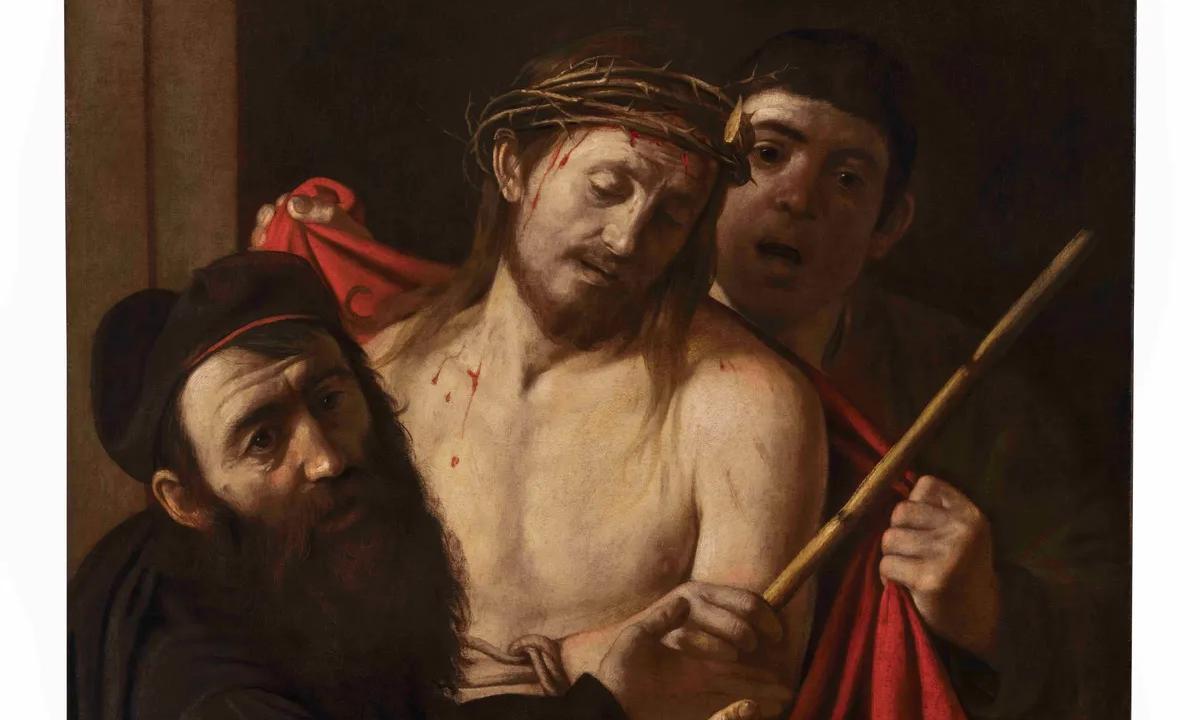Michelangelo Merisi (known as Caravaggio), Ecce Homo, around 1605-09. Image courtesy of a private collection
A work newly attributed to Caravaggio was unveiled with much fanfare at the Prado in Madrid on 28 May, with posts on social media showing how the painting was installed.
The work, known as Ecce Homo (around 1605-09), was withdrawn from an auction in Madrid in 2021 after officials at the Prado said there was “sufficient stylistic and documentary evidence” to suggest it could be an original Caravaggio. The London- and New York-based commercial gallery Colnaghi subsequently oversaw the authentication and extensive restoration of the work. The painting’s new owner, whose identity is undisclosed, has loaned the piece to the Prado.
Some scholars support the attribution. Maria Cristina Terzaghi, an associate professor in history of Modern art at University Roma Tre, said: “The speed of consensus around the work being a Caravaggio upon its rediscovery was absolutely unprecedented in the critical history of the painter [about whom] scholars have rarely agreed, at least in the past 40 years.”
Meanwhile, a statement on the Prado website says that: “four of the most authoritative experts on Caravaggio and Baroque painting [including also Giuseppe Porzio, an art history professor at the University of Naples L'Orientale]—they all share the same passionate certainty: that Ecce Homo is a masterpiece by the Italian artist.” A source close to the Prado also added that "all relevant and serious Caravaggio experts are convinced the work is authentic".
But there are also dissenting voices. In a series of detailed tweets on X, the art historian Kolja Thurner, who is based in Berlin, disputed the attribution. “It is, in my opinion, a good painting by a talented Caravaggio follower, stylistically imitating the master to a high degree. Figure types, hands, and bodies are, indeed, modelled after Caravaggio but when probed, stand out as derivate and very peculiar,” he wrote.
“I know of people in the art world who share my opinion, but who would never say anything publicly. There are, of course, also some [individuals] I know, who say it is just ‘Caravaggio on a bad day’, a verdict I just cannot reach when comparing it to his authentic works,” Thurner tells The Art Newspaper.
He also highlights another scholarly analysis which criticises the attribution by Camillo Manzitti who wrote in the Italian journal Finestre sull’Arte: “It is undoubtedly a fine painting, but totally lacking in Caravaggio’s dramatic vigour and the emotional tension inherent in the most tragic event in history, destined to upset the course of humanity.” Manzitti’s assessment is headed: “Reflection on Madrid’s Ecce Homo—it is not by Caravaggio.” Colnaghi and the Prado were contacted for further comment.

